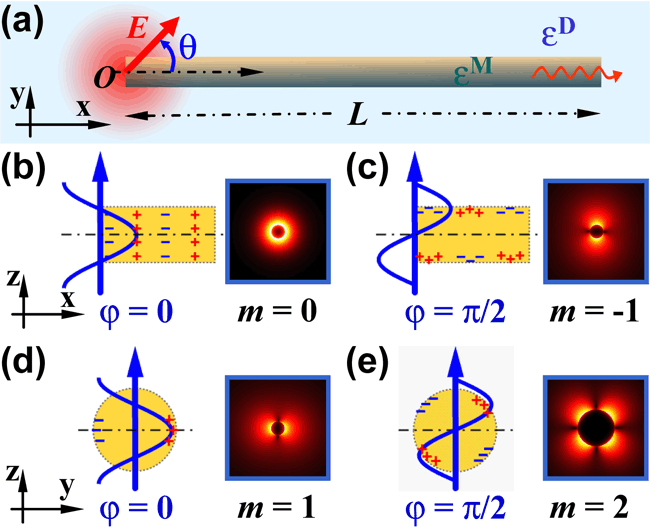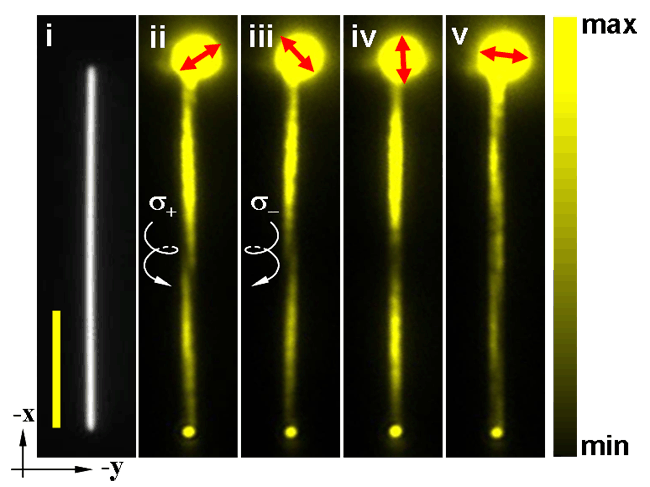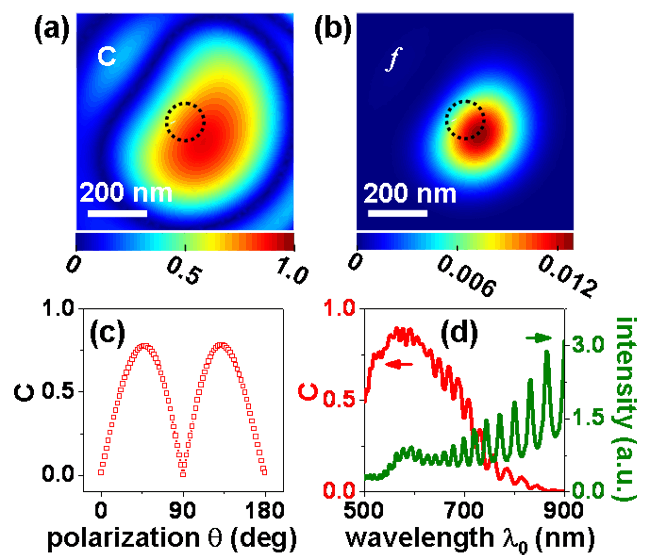Chiral surface plasmon polaritons in metallic nano-waveguides and nanoscale 1/4 wave plate
Surface plasmon polaritons (SPPs) in metallic nanostructures possess many peculiar optical properties, such as optical localization effect, extraordinary optical transmission, resonant frequencies sensitive to the surrounding environments, etc, which have broad applications in integrated nano-optical devices, cancer therapy, sensing, enhanced catalysis, solar cell and surface enhanced Raman spectroscopy, etc. Among those, designing and fabricating subwavelength optical devices using SPPs represents a new and blooming research area. In one dimensional nanostructures, light can be localized in the transverse direction within an area far smaller than its wavelength by virtue of SPPs, which serves as the basis of high density packing of optical circuits.
Prof. Hongxing Xu and his research team in Institute of Physics, Chinese Academy of Sciences/Beijing National Laboratory for Condensed Matter Physics have conducted a series of original research work aiming at the fundamental properties of metallic nanowire-based integrated nano-optical circuits in the past few years. Representative research achievements include angular emission characteristics of nanowire SPPs [Nano Lett. 9(12), 4383 (2009)], interactions between wire plasmons and single molecule or quantum dot [Nano Lett. 9(5), 2049 (2009), Nano Lett. 9(12), 4168 (2009)], all-optical router/demultiplexer [Nano Lett. 10(5), 1950 (2010)] and logic circuits [Nano Lett. 11, 471(2011)] constructed by nanowire networks, and cascaded nano-optical logic elements [Nat. Commun. 2, 387 doi: 10.1038/ncomms1388 (2011)].
Recently, PhD student Shunping Zhang and Dr. Hong Wei, et al. in Xu’s group discover both theoretically and experimentally that in homogenous medium, the coherent superposition of different modes on metallic nanowires can generate chiral (left-handed or right-handed) SPPs, so that SPPs propagate helically along the nanowire. In direct analogy with circularly polarized light, chiral SPPs also result from the superposition of two orthogonal components (the first order modes) with fixed π/2 phase difference. The chirality of SPPs (left-handed or right-handed) can be tuned by changing the angle between the nanowire and the polarization of incident light. The period of plasmon helix can be controlled by changing the size of the nanowire, refractive index of the surrounding medium or the wavelength of excitation light. These properties are of great importance in designing and fabricating subwavelength optical devices and circuits. The propagation characteristic of chiral SPPs can be precisely observed by quantum dot imaging technique. One important application of chiral electromagnetic waves is their interaction with chiral objects. The emitted photons at the distal end of the nanowire preserve the chirality of the chiral SPPs, thus, the metallic nanowire could be used as a tunable broadband circularly polarized light source, i.e. a nanoscale 1/4 wave plate. This circularly polarized light source can be used in the study of interactions between light and chiral objects (e.g. single chiral molecule, single DNA molecule or chiral proteins, etc) at nanoscale. These results have been published recently in Phys. Rev. Lett., 107, 096801 (2011).
The work was supported by Chinese Academy of Sciences, the National Natural Science Foundation of China, and the Chinese Ministry of Science and Technology.
 |
| Figure 1 (a) Schematic drawing of a metallic nanowire excited optically at the input end. (b)-(e) Left: Wire plasmon modes and their phase under parallel or perpendicular (to the wire axis) incident excitations. Right: Electric field distribution of the excited modes. (Image by Hongxing Xu et al.) |
 |
| Figure 2 Chiral SPPs on metallic nanowires. (a) Surface charge distributions. (b) Power flow distributions on different cross sections. (c) Periods of plasmon helix as a function of the nanowire radius. (Image by Hongxing Xu et al.) |
 |
| Figure 3 Quantum dots fluorescence images under excitation of different polarizations. (Image by Hongxing Xu et al.) |
 |
| Figure 4 The emitted photons at the distal end of the nanowire preserve the chirality of the chiral SPPs. (a) Degree of circular polarization; (b) Figure of merit; Degree of circular polarization as a function of incident polarization angle (c) and incident wavelength (d). The transmission intensity is shown for comparison in (d). (Image by Hongxing Xu et al.) |





